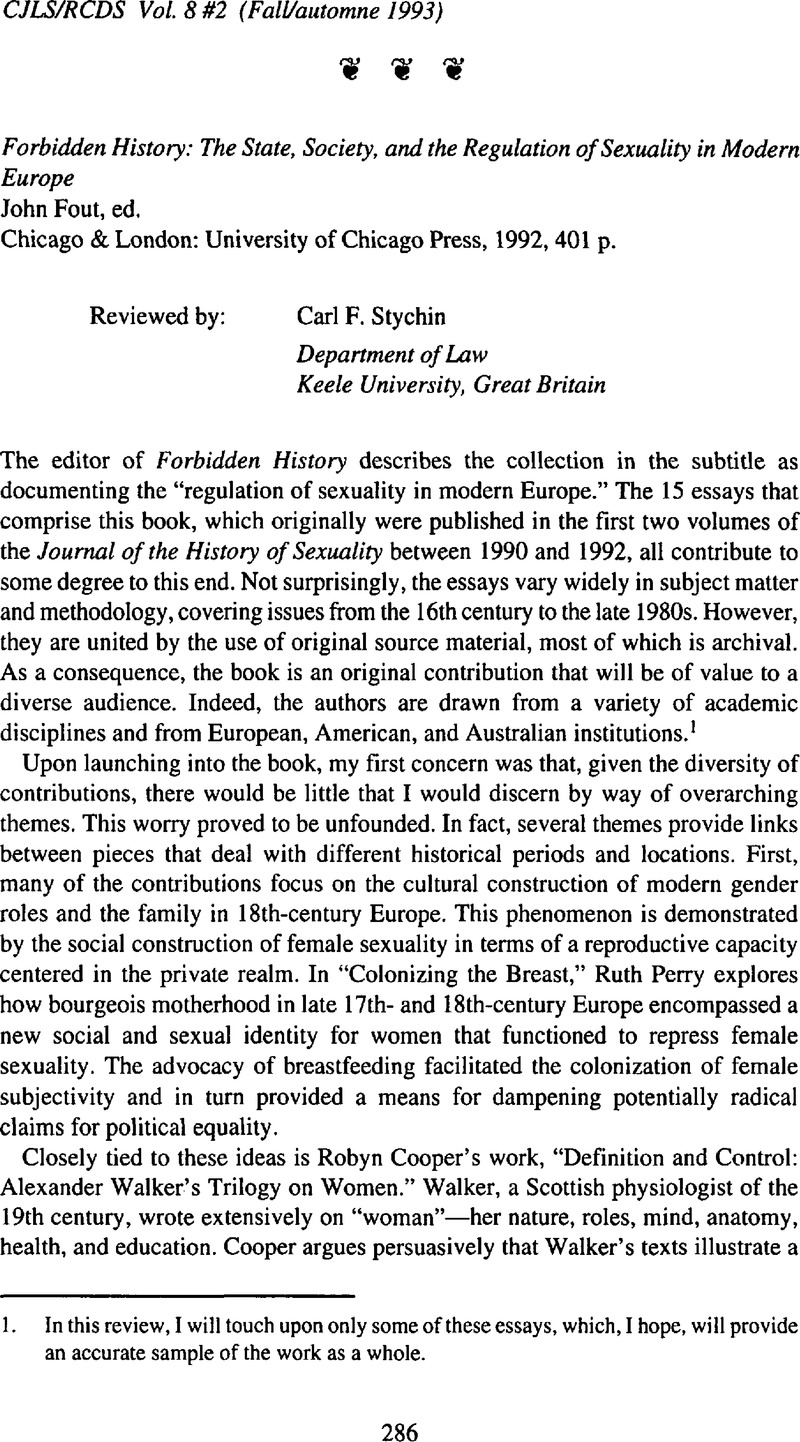No CrossRef data available.
Published online by Cambridge University Press: 18 July 2014

1. In this review, I will touch upon only some of these essays, which, I hope, will provide an accurate sample of the work as a whole.
2. For an introduction to the debate, see Stein, E., ed., Forms of Desire: Sexual Orientation and the Social Constructionist Controversy (New York: Garland, 1990)Google Scholar. The terms of the debate have been summarized by Epstein, S., “Gay Politics, Ethnic Identity: The Limits of Social Constructionism” in Forms of Desire at 239, 250–51Google Scholar: “Where essentialism took for granted that all societies consist of people who are either heterosexuals or homosexuals (with perhaps some bisexuals), constructionists demonstrated that the notion of ‘the homosexual’ is a sociohistorical product, not universally applicable, and worthy of explanation in its own right. And where essentialism would treat the self-attribution of a ‘homosexual identity’ as unproblematic—as simply the conscious recognition of a true, underlying ‘orientation’—constructionism focused attention on identity as a complex developmental outcome, the consequence of an interactive process of social labelling and self-identification.”
3. See Vance, C. S., “Social Construction Theory: Problems in the History of Sexuality” in Crowley, H. & Himmelweit, S., eds., Knowing Women: Feminism and Knowledge (Milton Keynes: Open University Press, 1992) at 132, 134Google Scholar: “At minimum, all social construction approaches adopt the view that physically identical sexual acts may have varying social significance and subjective meaning depending on how they are defined and understood in different cultures and historical periods. Because a sexual act does not carry with it a universal social meaning, it follows that the relationship between sexual acts and sexual identities is not a fixed one, and it is projected from the observer's time and place to others at great peril. Cultures provide widely different categories, schemata and labels for framing sexual and affective experiences. The relationship of sexual act and identity to sexual community is equally variable and complex.”
4. Foucault, M., The History of Sexuality, trans. Hurley, R. (London: Penguin, 1980) at 96Google Scholar.
5. For example, in “Pornography, Fairy Tales and Feminism: Angela Carter's TheBloody Chamber,’” R. A. Sheets provides an interesting addition to debates on pornography and sadomasochism through an analysis of the fiction of Angela Carter. However, the relationship between this essay and the archival work that forms the basis of the rest of the book is never clear. That is not to say that commonalities are not present, only that they are not easy for the reader to discern.